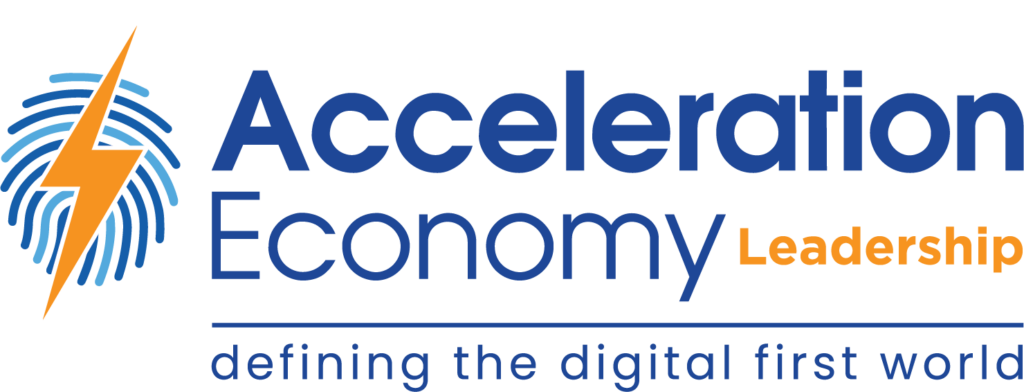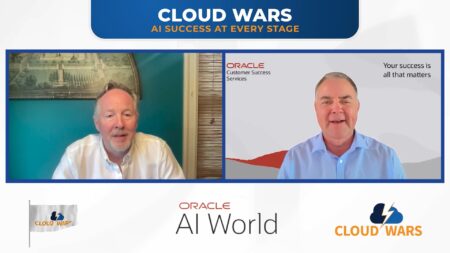In episode 30 of the Growth Swarm podcast, John Siefert, Bob Evans, Scott Vaughan, and Tony Uphoff discuss why now is the time to reimagine business models that include innovative technologies such as the cloud, hyperautomation, and artificial intelligence (AI). The hosts touch on the shift of company culture: How it has evolved to include a willingness to experiment with, and accelerate the use of, innovative technologies that are changing the world — all in a bid to appeal to the demands of customers. Finally, John, Bob, Scott, and Tony discuss the need for strong leadership that includes an understanding of strategic technology initiatives to truly drive successful business model transformation.
Highlights
00:36 — This year, there has already been plenty of news and excitement around reimagining business models — much of it focused on how organizations use the cloud, automation, and AI. In this episode, the Growth Swarm hosts discuss why now is the time to reimagine business models that include these technologies.
01:10 — Bob recently published a Cloud Wars Top 10 Roadmap 2023 Guidebook, which breaks down the Cloud Wars Top 10 companies and offers predictions and analysis of the top three priorities of these companies. John notes that something striking about the report was how organizations can implement the innovations coming from the largest cloud providers in the world to reconsider and reengage with customers, supply chains, and specific industries. He asks Bob for his thoughts.
01:55 — Bob singles out three prominent observations in the guidebook. The first is the power of culture — which is a new driver for company leaders. Secondly, the digital imperative — if companies lack digital capabilities, they will fall behind their competitors and fall short of delivering to customers. Finally, the fact that the world is introducing new and innovative technologies and tools, such as the generative AI tool ChatGPT. New things are coming, and the world needs to have the attitude and mindset that these new technologies can change everything.
04:05 — John notes how the idea of culture has shifted from a focus on people, products, or processes to now encompass how technology is incorporated within the reimagining of business models. He references a Hyperautomation minute from Chief Content Officer Aaron Back, who recently discussed how AI is defining traditional banking and the overall financial services industry. John asks Tony for his thoughts.
06:31 — Tony agrees that this is a fantastic example of how AI is transforming business models – but this is only the beginning. Currently, Tony is interviewing a handful of the upcoming CIO Summit speakers and notes the consistency of the modernization and reimagining of business models in their conversations. Innovative technologies like cloud and AI are “becoming commercialized” overnight, notes Tony. Executives must understand that it is important to “keep that balance, but be aggressive” with this tech. Now is the time to experiment with reimagining business models given the scalability and cost efficiencies of these technologies.
09:50 — It is interesting how applying artificial intelligence to the reimagination of business models has evolved to include hyperautomation, notes John. Acceleration Economy analyst Ronak Mathur recently published an analysis on why now is the time to hire a chief automation officer and Acceleration Economy analyst Wayne Sadin recently discussed why now may be the time to hire a Chief Sustainability Officer. Both of these pieces demonstrate the emergence of business models and emerging technologies coming together. John suggests that it is “mind-blowing” how quickly these things are coming together. John asks Scott, who spends a lot of time “on the go-to-market side of everything that organizations and mid-market companies are thinking through,” for his ideas on how these companies are reevaluating their business models.
11:46 — Hyperautomation is allowing marketers to build AI and automation innovations into their products and co-create with partner ecosystems, while ultimately allowing customers to decide what the best products are. Scott classifies this idea as product-led growth, which leads innovation to happen on many levels. In the end, the user has the most control.
14:32 — “New stuff to play with used to be intimidating to most organizations,” says John. In today’s business culture, “new stuff” is more accepted in organizations, as businesses recognize the need to move at the same speed as their customers. Rather than be intimated by emerging technology, they are looking at ways to accelerate their use of it.
15:28 — Bob agrees and comments on the notion that company leaders set the tone for overall culture. The “old-fashioned walls and barriers” preventing experimentation need to come down, as they prevent organizations from realizing and understanding what the world wants. The current times call for a strikingly different mindset, says Bob.
16:47 — Companies that are headed towards failure are those that are doing things the way they’ve always done, suggests John. A key part of creating a culture of experimentation and “pushing your organization to the edge” is being honest about the lack of technical knowledge a CEO may have.
17:39 — Tony recently published an analysis on how non-technical CEOs can lead tech executives, which highlights the fact that business strategy and technology strategy are indistinguishable. CEOs and executives must understand the implications and strategic initiatives of technology to be “able to hang in those conversations.” Non-technical CEOs must have the willingness to be vulnerable and transparent during the times they don’t understand technology products or concepts. Part of the path forward is creating and driving a culture that is open and transparent. Companies that refuse to engage with or educate themselves on technology are going to be left behind.
20:46 — Scott recently published an analysis on how to optimize sales and marketing dynamics during uncertain times, which focuses on important factors that allow companies to reimagine business models. John asks Scott to elaborate.
21:40 — Scott explains that the analysis encourages companies to take a cue from leadership and onboard technology experts to a company that is not as tech-savvy. Now is the right time to bring on tech talent, which still faces a big gap in most industries. Additionally, now is the time to co-create with customers, to make more profitable moves, while having an “ear to the ground and what’s happening.” When combined, these things start to drive sales, marketing, and other models.
23:26 — Organizations must be able to focus and prioritize in order to make a reality out of what Scott is describing, notes John.
24:49 — Scott agrees, and encourages leaders to put their energy out to the market and partners, as well as to double down on accelerating the level of co-creation that is happening with customers and vendors. Additionally, he advises that leaders focus on the things that “move the needle of the business levers.”
25:37 — Bob emphasizes that leaders must be the ones to set the tone and influence those under them. If companies allow themselves to take on a mindset of “not being able to do anything about customers or the global economy,” they will talk themselves into failure. In the context of co-creation, and culture, companies must stray from what they have historically done in the past in order to truly reimagine business models.









